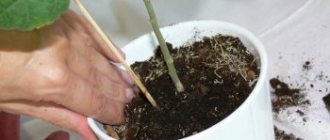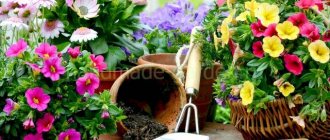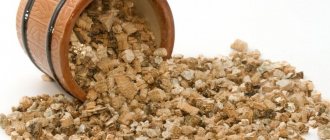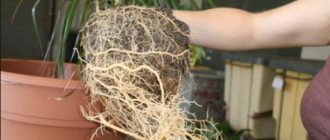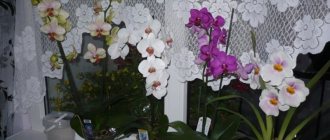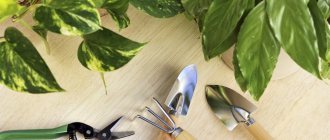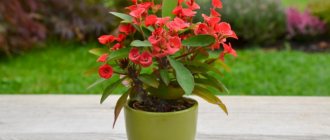2018 broke the scale of fashion interior values. Now - suddenly! – it is announced that a house without greenery is a thing of the past, that it is old and inexpressive. Suddenly it turned out that interior design without plants looks unfinished and faceless.
It lacks the fireworks of colors, grooming, originality, it looks bare and uninhabited. Everything can be learned by comparison: indeed, several living green plants in the interior of an apartment so transform the appearance of the room that if you remove them, a vacuum will form that cannot be filled even with very beautiful things.
Indoor plants transform the interior
This news inspired some to go to flower shops, others plunged into panic - after all, there are people in whose hands even a cactus will wither. Let us reassure you right away: there are acceptable design options for everyone; as a last resort, you can buy artificial plants for the interior.
But where to start? Certainly not from buying flowers!
Until then you will have to:
- find out whether vegetation in the house is useful;
- determine which corners of the apartment lack green areas and what role they can play in zoning and visual transformation of space;
Indoor plants can participate in room zoning
- figure out whether it is possible to combine the beautiful with the useful - with the edible, for example;
- decide in what frame the living accessories will appear - get acquainted with the types of pots, cache-pots, shelves, jardinieres, florariums;
- recover from the shock of discovering what unusual interior landscaping options designers have come up with (oh, believe me, they have nothing to do with geraniums on the window);
Consider unusual landscaping options
- breathe a sigh of relief upon learning about the existence of closed automated life support systems for plants in the interior;
- grab your heart (or wallet) by finding out how much such systems cost;
- assess the degree of illumination, humidity, temperature;
- develop a project for placing plants in the interior of the house;
- and only after that, choose the plants themselves for the interior - with the help of a designer or flower seller, taking into account the architectural style and your own inclination (or not inclination) towards floriculture.
Indoor plants should be in harmony with the interior style
It is reassuring that there is a grain of humor in such a serious algorithm. In the end, even randomly found flowers, geranium or ficus, will add the forgotten sweetness of good old traditions to the design and will be regarded by aesthetes as a fashionable touch. But we want more?
So, put aside your fears and go ahead and explore the green world of modern design!
Myths about houseplants
Superstitions regarding indoor flowers that ward off good luck are controversial, but arguing with them is a thankless task. Whether this is true or not, ivy has a bad reputation as a persecutor of men. It is believed that ivy prevents a lonely young lady from bringing a man into the house, and even more so from keeping him. At the same time, in narrow circles of magicians and fortune tellers, they note the ability of ivy to extinguish emissions of energy - both good and bad. Conclusion: after a scandalous breakup with a lover, ivy is just the pill that will help you forget, forgive and calm down.
There is talk about ivy's ability to dampen energy releases - both good and bad.
By the way, after ivy, its specific properties began to be attributed to other climbing plants in a residential building. It’s somehow a pity to abandon such a decorative category of indoor flowers because of unsubstantiated accusations, especially since ivy is clearly in trend.
The orchid suffers for almost no reason - it has been attributed to a suffocating effect due to the mere appearance of the roots, which supposedly entangle the sleeping person.
All the discussions about plants releasing carbon dioxide at night are pure truth. However, in the bedroom their presence is critical only if the room is hermetically sealed and not ventilated. To be honest, in such conditions it will be stuffy even without flowers.
Ventilate rooms with flowers
A more serious version seems to be that strong-smelling flowers interfere with night rest. Indeed, the intoxicating aroma can give you a headache during the day, although all this is very individual.
For allergy sufferers, any contact with pollen is undesirable; it is better for them to choose indoor flowers with decorative leaves. However, the soil also poses a danger, spreading fungal spores. This does not mean that you will have to give up your home greenhouse: you can, for example, cultivate green lawns using a hydroponic artificial irrigation system or use artificial flowers that skillfully imitate natural ones.
Plants in a hydroponic system are suitable for allergy sufferers
Conditionally poisonous plants pose a real serious threat and should be used with great caution. Poisonous greens include: aglaonema, anthurium, alocasia, croton, monstera, spurge, oleander, pachypodium, fatsia, dieffenbachia - their photos must be carefully studied and remembered.
Surprisingly, almost all of them turned out to be designers' favorites in 2018 - these plants are so picturesque! Shouldn't we give up such beauty? As a last resort, they can be placed in the upper tier of landscaping - it’s safer.
Picturesque monstera in the interior
It remains to add that, with very rare exceptions, plants in the interior of a residential building play the role of an island of nature, which refreshes and moisturizes the air, soothes, and pleases the eye.
Selection of plants for different types of premises
The correct choice of plants for the interior depends on the characteristics of the room being decorated, such as:
- functional purpose
- dimensions
- temperature regime
- illumination
Plants are present both in the interiors of public spaces (offices, shops) and, of course, residential ones.
Selection of plants for the interior of a public space
The most basic criterion for choosing landscaping for offices (shops, restaurants, cafes, etc.) is the unpretentiousness of the plants. It is no secret that there is no proper care of green spaces in public spaces: working people usually do not have time to fully care for flowers. In addition, plants in offices are often left completely unattended for a long time, for example during the holiday period. Therefore, it is recommended to decorate public spaces only with those plants that can easily withstand spartan conditions: changes in temperature and air humidity, long-term lack of watering, lack of fertilizing.
What specific unpretentious plants can be recommended for growing in office buildings? Here is just a partial list: Sansevieria (mother-in-law's tongue), chlorophytum, aspidistra, zamioculcas (dollar tree), monstera, dieffenbachia. These are quite spectacular plants and, at the same time, capable of being content with little.
Plants in a public interior
Selection of plants for residential interiors
One of the factors in choosing plants for a house or apartment is the functional purpose of the planted space (living room, bedroom, kitchen, and so on). Let's take a closer look at the landscaping of each room.
Selection of plants for the hall, hallway
The main problem of almost all halls is insufficient illumination of the room and drafts, while the dimensions of the room are usually quite large. Large plants that are not demanding on lighting conditions, such as anubias, aglaonema, various ferns, monstera, are best suited for the interior of the hall.
Plants in the hall, hallway
Selection of plants for the living room
The living room is usually the largest and brightest room in the home, so the choice of plants for your living room is almost unlimited. You can place green islands in the living room using existing furniture and window sills, or by creating flower arrangements in free-standing flowerpots.
In the living room you can place fairly large plants that are not suitable for other rooms in size, such as dracaena, ficus, monstera, and various palm trees. Small flowers can be combined into groups, thus forming green areas. Climbing plants located in hanging pots (ivy, tradescantia, zebrina, philodendron) would also be appropriate.
If the living room is not also a bedroom, you can place strong-smelling, fragrant plants in it. A pleasant floral scent will be just right in the common room of the house.
In general, a fairly spacious and well-lit living room gives the amateur gardener the widest possibilities for landscaping.
Plants in the living room
Selection of plants for the bedroom
Bedrooms are usually small rooms, often with only one window. Therefore, small-sized plants that adapt well to low light conditions are best suited for the bedroom. Such, for example, as Saintpaulia (violet), clivia, begonia, ivy, nephrolepsis and others.
The room in which we sleep should be filled with fresh air. To maintain a comfortable microclimate in the bedroom, you can place plants that purify the air and release phytoncides - aglaonema, tradescantia, spathiphyllum, dendrobium orchid. At the same time, for placement in the bedroom it is necessary to select plants that do not emit strong aromas that provoke insomnia or headaches.
Plants in the bedroom
Selection of plants for the kitchen
When choosing plants for the kitchen, it is necessary to take into account factors such as high humidity, drafts, temperature changes, and various odors. Capricious and exotic plants that are too demanding on living conditions are not suitable for the kitchen. More unpretentious types that can withstand different climatic conditions are an excellent option for placement in the kitchen. These can be plants such as balsam, arrowroot, cyclamen, geranium, Kalanchoe, begonia.
Houseplants that can bear fruit (coffee tree, various types of citrus fruits, decorative peppers) are perfect for placement in the kitchen. Growing fruit plants can not only decorate a room, but also bring very practical benefits.
Plants in the kitchen interior
Selection of plants for the bathroom
Plants in the bathroom
If you are the proud owner of a bathroom with a window, you can easily grow flowers in this room. Plants that prefer high humidity would be appropriate - cyperus, adiantum, vriesia, various orchids, ferns and many others.
[!] When choosing plants for each room of a house or apartment, focus primarily on the microclimate of the room (average temperature, air humidity), lighting conditions and room size.
The triumphant return of the ficus - new botany in the interior
How did it happen that in 2022, designers turned to indoor plants? This became a logical continuation of the idea of ecological phytodesign of the interior, which the Japanese and Scandinavians have never changed. The need for natural materials, natural forms and islands of nature inevitably resulted in an interest in house plants and the search for their new role in home decoration.
The revolutionary direction was called “new botany”. It has penetrated into the interior of all existing styles, from urban to country, from minimalism to classic.
The mission of indoor plants is to harmonize the design of the home and bring a new melody to it.
Indoor plants will bring a fresh note to the interior
How necessary are indoor plants in the interior of an apartment decorated in a certain style, and which ones should you give preference to?
Fashionable aesthetics of the concrete jungle - a combination of loft and living plants
What does ficus do in a loft interior? No, he's not blocking a hole in the wall!
A large plant in an urban interior plays the same role as a red leather sofa or a painting in a gilded frame - working “in contrast”, it emphasizes the picturesque imperfections of industrial textures.
Well-groomed greenery against a background of concrete or brickwork enhances the shocking effect. For loft apartments, voluminous plants with expressive large leaves are selected, in stone tubs or metal containers adapted for them (photo).
Plants with large leaves are suitable for loft apartments
A daring technique for landscaping a loft is an imitation of an industrial greenhouse. Industrial lattice glazing, irrigation pipes and lush greenery in an enclosed space develop style ideas in an unexpected way.
Plants in flasks, transparent balls, in glass jars - these fashionable florariums seem to be created to create local green accents in an urban interior.
Florariums are ideal for loft-style interiors
Warm to cold: indoor flowers in a high-tech interior
What might greenhouses look like on a space station? Probably the same as plants in high-tech apartment design projects.
First of all, these are lawns, horizontal and vertical. By the way, a vertical lawn is a complex engineering structure with an automatic watering system, which conceptually fully complies with the principles of high-tech style.
Vertical gardening for high-tech interiors
Florariums, miniature and voluminous, are semi-closed ecosystems with a microclimate. They are picturesque and perfectly harmonize with the glossy surfaces of the interior.
A vintage element – ceiling plants growing “upside down”. This is something that surprises immensely every day, something that is impossible to get used to. But it is in high-tech that such interior landscaping seems quite logical.
Creative plants growing upside down
Heroes of eco-design – all areas of country style
What did the fashion trend of “new botany” give to the country style, in which flowers and green plants were traditionally present? First of all, he raised the status of the country music genre. Secondly, the developments of the new wave gave interior designers fresh ideas and magnificent floral accessories - stands, whatnots, jardinieres, flowerpots.
It would be a slight exaggeration to say: there are so many country style trends. Let's consider techniques for using indoor flowers and plants in the interior of city apartments with rural design.
Flowers and scents of Provence
In the French provincial style of Provence, flowering crops are in the lead:
- roses;
- violets;
- geranium;
- oleander;
- bulbous - tulips, hyacinths, daffodils, crocuses;
- mini-lawns in pots made of cereals, lavender, herbs.
- as well as evergreen laurel, ficus, etc.
Violets will fit perfectly into a romantic interior in Provence style
The peculiarity of Provence is the adaptation of a variety of containers as flower pots and ingenuity in their handicraft decoration. They are painted, aged, covered with craquelure and patina.
An important element is the abundance of shelves, jardinieres, shelves and improvised pedestals for plants. In Provence, it is customary to place flower pots on the windowsill, on the kitchen sink or dining table.
In Provence, it is customary to place flower pots on the windowsill
American country
The least affected by new landscaping ideas is American country music; this style is incredibly conservative. A few wooden or ceramic plant pots are more than enough to liven up your farmhouse interior.
Several plants in ceramic pots will decorate a country-style interior
Japanese mini gardens
In the tradition of Japanese interior - admiring plants, stones, wood. All three elements are present in living plant compositions in the Japanese style.
Bonsai for a laconic interior in Japanese style
Plants in Japanese interiors are never presented without a frame. A wooden stand, a clay or wooden pot, stones and sand covering the ground, a lone bonsai tree or a plant composition - all this makes up a single whole.
Mediterranean style: blooming shore
A sunny Mediterranean interior with elements of rough antiquity is filled with special charm when southern flowers and plants settle in it - indoor cypresses, papyrus, oleander, ivy, roses, etc.
Indoor cypress trees
Ceramics, stone, mosaics, wood, metal, fabrics and ropes are used in the design of pots.
Lemon Tree
Which gardener has not at least once tried to plant a lemon seed in a pot? Almost always, the seed germinates successfully and a small tree begins to form. But this is at first, because in nature a lemon can grow up to eight meters in height, and in apartment conditions it reaches a height of two meters.
It is difficult to place a full-sized tree in a bedroom or small kitchen, so grow your citrus in the living room. Please note that lemon does not like to move from one place to another. In this matter he is conservative and prefers consistency.
Lemon is a long-living indoor plant; it can grow up to 40 years without losing its decorative value. A tree can not only decorate a room, but also bear fruit - real sour lemons. To obtain a guaranteed harvest, it is best to grow varietal lemon, which can be purchased as a small plant at a flower shop.
Scandinavian clean lines
In the Scandinavian interior, indoor plants carry the same load as large designer accessories: they give minimalism the charm of elitism. Each plant is “presented” so that it is the center of attention.
What new things have the trendsetters in the field of design enriched this style with? Lawns came into the interior. They have been used before in the Scandinavian style, but only selectively. Now the lawn is given a wall, a podium, and some other significant spaces. In continuous landscaping, cereals, moss, hanging plants and low leafy plants are used.
Interior landscaping in Scandinavian style
It was in the Scandinavian style that vertical hanging gardens were first used. They are framed like a painting. They create a picturesque carpet of stems and leaves of different textures. Built into niches. They replace the walls.
Vertical flower bed in a Scandinavian interior
Florariums – inventive mini-greenhouses for dwarf plants – effectively and organically complement the decor.
An extravagant way to present plants is hanging flowers from the ceiling. And a completely surreal example of phyto-interior design - inverted pots with stems growing downwards.
Classics and phytointerior design: the embodiment of decency
The classic interior and its lightweight version - neoclassicism - have never particularly needed support from plant decor. Now the current classic design involves creating a green island in the room from several plants on jardinieres, shelves or in floor planters.
Green islands in a classic interior
The hallway can greet guests with a luxurious palm tree in tubs, and in the living room, behind the back of the sofa, an unusual carpet will unfold - a vertical panel of flowering and deciduous plants. The new face of a classic interior is defined by vibrant green accents.
Jasmine
Another beautiful fragrant flower is jasmine. It is not recommended to place it in bedrooms, since it is at night that the flowering tree most actively emits its aroma. In a small room, the smell can become intrusive, causing headaches and poor sleep.
By placing jasmine in your living room, you can avoid these problems, but still admire the beauty of the plant and enjoy its aroma. Jasmine is photophilous, but does not like direct sunlight.
Maximalism in everything or the Revival of true luxury
The modern interior of apartments, “brought up” on ascetic minimalism, misses luxury. This is noticeable in many trends - the return of velvet, damask ornament and lacquer polishing of expensive furniture, in the rich terracotta palette that replaced Marsala, in relation to indoor plants, which have moved from occasional decor into the category of a powerful, conceptual architectural form.
Green oasis of indoor plants
Green areas in the apartment are designed comprehensively. Their role in zoning is thought through, lighting and humidity are checked for compliance, and maintenance is planned. They have become larger, more creative, more diverse.
Vertical green area in the apartment
At the same time, a good modern interior is characterized by some irony and a lack of narcissism. Example? Yes, here it is, in front of you - a little mischief in the kitchen, and not only.
We focus on style
The stylistic solution of the interior is one of the vectors that are oriented towards when selecting vegetation. Let's consider suitable combinations:
- Japanese style is invariably associated with bamboo and bonsai. The photo of a houseplant amazes with its unusual appearance.
- The oriental style is accompanied by pachira, the photo of which is presented below, and orchids.
- A vintage interior will be organically complemented by an indoor rose.
- The decor of the classics will be decorated with flowering specimens. Stucco flower pots can serve as additional decoration. Hydrangea, violet, begonia, ivy, and chlorophytum are suitable for these purposes.
- Dracaena and Bengal ficus look great in a Mediterranean interior.
- The English and French style is combined with lush vegetation such as cyclamen or camellias.
- Modern minimalism also cannot do without greenery. Here it is important to observe moderation and limit yourself to two or three large specimens. Yucca (pictured below), dracaena or nolina are suitable.
- Compositions made from succulents are a suitable solution for strict high-tech.
- The fusion style welcomes bright indoor plants that have an unusual shape. Croton, sheffler or arrowroot will become worthy interior elements.
- Monstera, philodendron, voluminous ficus and palm are a good solution for a colonial-style setting.
The proposed photos with the names of indoor plants will help you decide on the choice for decorating your own interior.
I raised you - I will eat you: about beautiful and tasty phytodesign
It turns out that nothing human is alien to high fashion. She blessed - there is no other way to say it - the creation of garden greenhouses, the placement of edible indoor plants in the interior of a city house. Moreover, for many, this activity has become an incredibly contagious hobby, and amateur designers are in the process of searching for new “tricks.”
First of all, let's look at the kitchen and dining room. All kinds of bucket jars, as well as quite respectable flowerpots (depending on the style of the interior) are densely planted with parsley, watercress, arugula, mustard, basil and other spicy herbs. Nobody strives to bring it to a state of biological ripeness. When it grew, they cut it down and planted a new one.
Spicy herbs are appropriate in the kitchen interior
If opportunities allow, you can decorate a phytopan above the dining area.
Another option for selecting plants is “guests from the dacha.” At the end of the summer season, bushes of dwarf tomatoes and peppers move into the kitchen (chili looks especially nice). Of course, they can be grown directly in pots, bypassing the garden beds.
Resourceful housewives have found that stalks of lettuce and Chinese cabbage - leftover greens from the supermarket - take root very well in pots. Practical, tasty, beautiful! And what’s especially nice is that now it’s fashionable!
At the end of the summer season, move dwarf tomato bushes into the kitchen
Trees and bushes with delicious fruits can also be found in living rooms. Among the most popular are lemon, pomegranate, fig, dwarf tangerine, and avocado. Actually, experiments with planting exotic plants from seeds continue and soon they can be called indoors.
Lemon trees can increasingly be found in living rooms
Adjustment of space
Greenery can not only fill the interior with the desired atmosphere, but also adjust the visual perception of the volume of the room. Depending on the use of massive large plantings or a group of small flowers, the space feels completely different.
Experienced comments from specialists will be useful when decorating the interior:
- Large leaves of a voluminous palm tree have an overwhelming effect on the interior of the room. An accent plant requires a lot of space, so it looks organic in spacious rooms with high ceilings.
- Indoor plants with climbing shoots in hanging flowerpots are associated with a floating cloud. They look advantageous in the interior of low rooms, raising the ceiling visually. But it is better to place them in the background.
Selected names of climbing indoor plants are presented in the photo:
- When choosing green spaces, the light transmittance and overall decorativeness of the bush, its ability to weigh down the space or make it more airy, are taken into account.
- Greenery successfully masks unsuccessful areas of the design. When an empty wall or a massive table becomes uninteresting, you can successfully beat them with the help of one indoor flower or an entire composition.
Photos of indoor plants will give you the opportunity to enjoy an organic interior:
Hedges made of plants in the interior
Composition in flowerpots
Indoor flowers are a new tool for zoning a room. The simplest and most effective division of functional zones comes down to installing large flowerpots or stands with flowers between them. Pots and stands on wheels are ideal for this purpose.
Zoning with flower stands
In this way you can visually separate the kitchen from the dining room, the dining room from the living room. It’s easy to allocate private spaces in a nursery for two. Flower groups are placed so that they do not block the passage, but mark boundaries. Large plants - palm trees, lemon, ficus - successfully cope with the role of a false wall.
Vertical green screens
A radical way to divide space is to install living partitions with vertical plants. Their designs are varied, and such walls made of herbs, succulents, ivy or leafy plants look incredibly impressive.
Designers are in no hurry to add a glass block partition between the bathtub and toilet in a combined bathroom to the project - instead, you can install a frame for vertical gardening. It’s easy to give moisture to nearby water, moss or hanging plants, and succulents will receive enough moisture even without watering. The lighting problem can be solved by additional lighting, but if the bathroom has a window, then there will be no shortage of lighting.
Living partition with vertical arrangement of plants
Such structures are built into interior partitions separating the hallway and living room, bedroom and study. For a vertical greenhouse you will not need a single square meter of space, because it is inscribed in the thickness of the wall.
The internal garden wall is illuminated with lamps. First of all, it's incredibly beautiful. Secondly, additional lighting helps plants grow intensively and bloom luxuriantly.
We take into account the functionality of the room
The purpose of the room also plays a role when choosing indoor plants. For a spacious living room, ampelous types and large floor-mounted specimens are suitable. Sometimes one lush ficus or palm tree is enough for the interior. Small-leaved types of indoor greenery are more suitable for the interior of the dining room. Spathiphyllum, hibiscus or guzmania will add a touch of wildlife to the atmosphere, and the process of eating will become even more enjoyable.
Advice! For the bedroom, select vegetation that actively releases oxygen at night.
The hall and office are decorated with shade-loving indoor plants.
Whether to place flowers in the nursery is determined by each parent independently; it depends on the age of the child and his physical activity. In any case, it is preferable to decorate the interior with unpretentious species without thorns that do not emit toxic substances.
The kitchen area can play a cruel joke on lovers of indoor plants. Often it upsets owners with its small size. The spacious interior will only benefit from the presence of living greenery. But the specific atmosphere of the room requires a special approach when choosing plantings. Only those specimens that can withstand temperature changes and high humidity will take root here. The photo below shows examples of indoor plants with names that successfully acclimatize in the kitchen:
In addition to the types presented above, all kinds of seasonings such as basil, mint, dill and parsley are planted in pots.
How to avoid getting into slavery?
Proper care of indoor plants in a city apartment takes a lot of time. How to keep them in excellent condition and not waste half of your free time on hassles?
If plant growing has not turned into a favorite hobby, then you need to select indoor flowers that develop well in the given conditions - with the available lighting, humidity, and temperatures. Limit the choice based on the simplest agricultural technology. Keep in mind that large and non-flowering plants are usually easier to care for.
Flowers for the nursery. Flowers in kindergarten
When choosing a flower for a nursery or kindergarten, you should know some rules:
Rule No. 1: The potted plant should not be thorny, so as not to injure the child.
Rule No. 2: The plant must be anti-allergenic.
Rule No. 3: The plant should not be capricious in terms of care, especially with regard to watering. Let the children have an assignment - water the flowers. And this process should be as simple as possible.
Rule No. 4: The plant in the children's room should be so safe that it will not harm the child, even if he bites off and swallows it!
After placing the plant in the children's room, explain to your child the name of the flower, what is useful in it and when it needs to be watered.
So what indoor plants are suitable for a nursery?
- Chlorophytum
A good plant for air purification. Even if a child forgets to water it or, on the contrary, overfills it a little, nothing bad will happen.
- Lemon
The mini-tree will give the room a pleasant aroma due to the essential oils it releases. Imagine how much joy the children will have when the lemon fruits begin to ripen! But there is one thing - if you touch the leaves with your hands and then your eyes, it will sting a little, although this is not dangerous and will not last long.
- Peperomia
Any child will love the cute striped leaves. The plant also blooms frequently and for a long time. And it’s absolutely easy to care for.
- Fragrant herbs (mint, thyme, sage)
You can plant several small pots on the window - the child will love to grow cute fragrant bushes, and then add them to tea.
Photo 5. Decorative foliage plant calathea in the children's room
What should incompetents do?
If a person absolutely does not know how to care for fresh indoor flowers, then this is not a reason to abandon the “green” interior. There are alternatives:
- Cultivate succulents. It is enough to water them once every 1-2 weeks, but you cannot “flood” them - they will get sick.
- Mastering the forcing of bulbous flowers is not at all difficult.
Learn to force bulbous flowers
- Install vertical and horizontal landscaping with automatic watering, installed by professional florists.
- Order a panel made of stabilized moss - a living material that, as a result of processing, retains its fresh appearance for 5 years.
Panel made of stabilized moss
- Limit yourself to cut leaves and branches in vases with water. Monstera leaves, olive and eucalyptus branches can stand in water for 2-4 weeks.
- Use artificial plants - at some distance they cannot be distinguished from real ones.
High-quality artificial plants cannot be distinguished from real ones
Fashion is harsh. If you don’t introduce indoor plants into your interior now, then in a year it will turn out that the chic apartment design, devoid of flowers and green areas, is hopelessly outdated.
The main condition is unpretentiousness
Flowers that do not require careful care are always preferred. For example, zamioculcas is a plant that gets along well in the sun or shade.
- In addition, it does not require constant watering. He won the favor of the owners for a long time. For a long time, the “money” tree has not been ignored. It looks especially attractive thanks to the small succulent leaves that beautifully frame the trunk.
- Turn your creative attention to bulbous specimens. They always delight with their bright colors and pleasant aroma, which is so pleasant to smell in the cold winter. This way you can create a whole garden of flowers.
- The growth of progress has made it possible to enjoy artificial plants that simply cannot be distinguished from real representatives of the flora. Their care is minimal, which especially attracts particularly busy owners.
It is worth paying special attention to the fashionable colors of pots and pots. The initial fashion for dishes of this kind with polka dots, stripes of bright colors or flowers has given way to a pleasant and calm monotony, which is no less pleasing to the eye.
It’s especially good when combined with vintage and finishing of furniture pieces. In this case, all attention is focused on the attractiveness of representatives of the plant world.
What designers surprised us with in 2022
Summing up the fashionable review of plant design in the interior, we will highlight new items, discoveries and the most important trends.
- An interior without plants is not modern.
- There are never too many plants.
- Autonomous closed phytosystems have opened a new era in apartment design.
- A phytowall with auto-irrigation is the main find of 2022.
- Florariums and microgreenhouses are favorites of designers.
- The most unexpected technique is to grow plants upside down.
- Moss has come to interior design.
- The most fashionable decorative plants in the interior are poisonous.
- Stabilized plants do not differ from real ones, do not require care, and last for 5-6 years.
- Artificial flowers turn out to be stylish.
- A cut leaf in a vase competes with a bouquet of flowers.
It's hard to imagine a modern interior without plants
When a new wave sweeps into fashion, designers' recommendations are full of categoricalness, and conceptual models are full of exaggeration. This is the law of the genre: in order to accept something new, you must experience shock.
Subsequently, everything will become more democratic and harmonious, but for now, at the turning point of fashion trends, we find ourselves under a kind of pressure: either we urgently need to select plants for the interior, or we will have to join the ranks of retrogrades.
However, compromise solutions have already been proposed, and choosing your own style is perhaps the most interesting thing in the world of fashion.
Ficus
Ficus rubber is a classic indoor tree from the times of our grandmothers and great-grandmothers. Modern apartments are more often inhabited by other, smaller varieties of ficus: Bengal, dwarf, ficus Ali, Benjamin.
Ficuses do not like rearrangements and easily tolerate partial shade. They are evergreens, but may lose their leaves if growing conditions are poor. The trees die completely when the temperature drops to 10-12 degrees. Ficus plants come from the tropics, so they will feel great in your living room at a temperature of 20-25 degrees and sufficient watering.
Do not forget: rubber ficus grows rapidly; in apartment conditions it is necessary to limit its growth by placing the tree in small pots.
To decorate the living room, it is advisable to select large ornamental plants that fit well into the interior of a spacious room. Small flowers can get “lost” in space. Keep in mind that most of these plants do not like rearrangements; immediately select a permanent place of residence for them.



